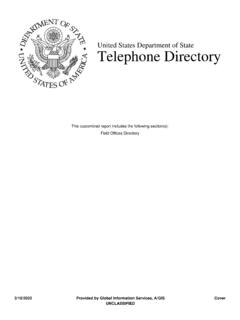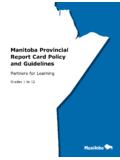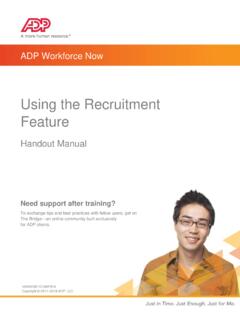Transcription of Instructions for Completion of Surgical Site Infection ...
1 January 2022 1 Instructions for Completion of Surgical Site Infection (SSI) Form (CDC ) Data Field Instructions for Data Collection Facility ID The NHSN-assigned facility ID will be auto-entered by the computer. Event # Event ID number will be auto-entered by the computer. Patient ID Required. Enter the alphanumeric patient ID number. This is the patient identifier assigned by the hospital and may consist of any combination of numbers and/or letters. Social Security # Optional. Enter the 9-digit numeric patient Social Security Number. Secondary ID Optional. Enter the alphanumeric ID number assigned by the facility. Medicare # Optional.
2 Enter the patient s Medicare number. Patient Name Optional. Enter the last, first, and middle name of the patient. Gender Required. Check Female, Male, or Other to indicate the gender of the patient. Date of Birth Required. Record the date of the patient birth using this format: MM/DD/YYYY. Ethnicity Optional. Specify if the patient is either Hispanic or Latino, or Not Hispanic or Not Latino. Race Optional. Specify one or more of the choices below to identify the patient s race: American Indian/Alaska Native Asian Black or African American Native Hawaiian/Other Pacific Islander White Event Type Required. Enter SSI. Date of Event (DOE) Required. The date when the first element used to meet the SSI Infection criterion occurred for the first time during the surveillance period. The DOE must occur within 30 days or 90 days after the NHSN operative procedure (where Day 1 = procedure date), depending on the NHSN operative procedure category.
3 The DOE must reflect the deepest tissue level where SSI criteria are met during the surveillance period. January 2022 SSI 2 Data Field Instructions for Data Collection Synonym: Infection date. NHSN Procedure Code Required. Enter the appropriate NHSN procedure code name (for example, COLO, HYST). For detailed Instructions on how to report NHSN operative procedures, see the SSI protocol. Note: An SSI cannot be linked to an operative procedure unless that procedure has already been added to NHSN. If the procedure was previously added, and the Link to Procedure button is clicked, the fields pertaining to the procedure will be auto-entered by the computer.
4 ICD-10-PCS or CPT Procedure Code Optional. The ICD-10-PCS or CPT code may be entered here instead of (or in addition to) the NHSN Procedure Code. If the ICD-10-PCS or CPT code is entered, the NHSN code will be auto-entered by the computer. If the NHSN code is entered first, you will have the option to select the appropriate ICD-10-PCS or CPT code. In either case, it is optional to select the ICD-10-PCS or CPT code. The only allowed ICD-10-PCS or CPT codes are those found in the Operative Procedure Code Documents section of the Surgical Site Infection (SSI) Events page on the NHSN website. Date of Procedure Required. Record the date when the NHSN operative procedure started using this format: MM/DD/YYYY. Outpatient Procedure Required. Check Y if the NHSN operative procedure was performed on a patient whose date of admission to the healthcare facility and date of discharge are the same calendar day, otherwise check N.
5 MDRO Infection Surveillance Required. Enter Yes , if the pathogen is being followed for Infection Surveillance in the MDRO/CDI Module in that location as part of your Monthly Reporting Plan: MRSA, MSSA (MRSA/MSSA), VRE, CephR-Klebsiella, CRE (E. coli, Klebsiella pneumoniae, Klebsiella oxytoca, Klebsiella aerogenes, or Enterobacter), MDR-Acinetobacter, or C. difficile. If the pathogen for this Infection happens to be an MDRO but your facility is not following the Infection Surveillance in the MDRO/CDI Module in your Monthly Reporting Plan, answer No to this question. Note: For an SSI, the location of attribution is the post-op location, therefore answer YES to this question if: the event occurs in a different calendar month from the Surgical procedure AND January 2022 SSI 3 Data Field Instructions for Data Collection the facility is performing Infection Surveillance for the organism causing the SSI in the post-op location for the month reported in the Date of Event.
6 Date Admitted to Facility Required. Enter date patient admitted to facility using this format: MM/DD/YYYY. If a patient is readmitted with a previously unreported SSI associated with an NHSN operative procedure performed during a previous admission, enter the date of admission of the facility stay in which the NHSN operative procedure was performed. When determining a patient s admission dates to both the facility and specific inpatient location, the NHSN user must take into account all such days, including any days spent in an inpatient location as an observation patient before being officially admitted as an inpatient to the facility, as these days contribute to exposure risk. Therefore, all such days are included in the counts of admissions and patient days for the facility and specific location, and facility and admission dates must be moved back to the first day spent in the inpatient location.
7 Location Conditionally required if MDRO Infection Surveillance field = Yes. Enter the inpatient location (Operating Room locations are not allowed) to which the patient was assigned on the date of the SSI event. If the date of the SSI occurs on the day of transfer/discharge or the next day, indicate the transferring/discharging location, not the current location of the patient, in accordance with the Transfer Rule (see Key Terms section ). If the patient is readmitted with the SSI during the surveillance period, enter the inpatient location (Operating Room locations are not allowed) that the patient was discharged from for the facility stay in which the NHSN operative procedure was performed. Event Details: Specific event Required. Check the appropriate level of SSI from the list ___Superficial incisional primary (SIP) ___Superficial incisional secondary (SIS) ___Deep incisional primary (DIP) ___Deep incisional secondary (DIS) ___Organ/space: _____ (Indicate specific site code from Table 3 of the SSI protocol.)
8 Event Details: Specify Criteria Used Required. Check each of the elements of the definition that were used to identify the specific type of SSI. Specific organ/space event types have their January 2022 SSI 4 Data Field Instructions for Data Collection own unique criteria which must be met. They are found in the Surveillance Definitions chapter. Infection present at the time of surgery (PATOS) Required. Check Y if there is evidence of Infection visualized (seen) during the Surgical procedure to which the SSI is attributed. The evidence of Infection must be noted intraoperatively and documented within the narrative portion of the operative note or report of surgery.
9 Only select PATOS = Y if it applies to the depth of the SSI that is being attributed to the procedure. See SSI protocol for full details regarding how to apply the PATOS definition. Event Details: Detected Required. Check A if SSI was identified before the patient was discharged from the facility following the procedure. Check P if SSI was identified in a patient not readmitted to any facility (SSI detected only as part of post-discharge surveillance). This includes patients seen in the Emergency Department for work-up of SSI but not readmitted to any facility. Do not select P if patient is subsequently readmitted to a facility, instead check either RF or RO as appropriate. Check RF if SSI was identified due to patient readmission to the facility where the procedure was originally performed. Check RF regardless of readmission to a prior facility.
10 Check RO if SSI was identified due to patient readmission to a facility other than where the procedure was performed. Only check RO if SSI was identified in a patient that was not readmitted to the facility where procedure was originally performed. Event Details: Secondary bloodstream Infection Required. Check Y if there is a bloodstream Infection (BSI) identified secondary to the SSI, otherwise check N. For detailed Instructions on identifying whether the blood specimen identification represents a secondary BSI, refer to the Secondary BSI Guide (Appendix B of the BSI Event Protocol). The secondary BSI attribution period for SSI is a 17-day period that includes the date of event, 3 days prior and 13 days after. Event Details: Died Required. Check Y if patient died during the hospitalization, otherwise check N. Event Details: SSI Contributed to Death Conditionally required.
















